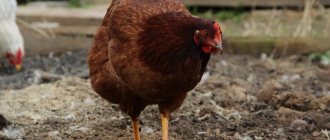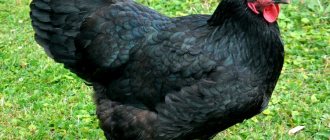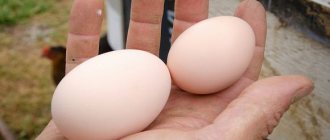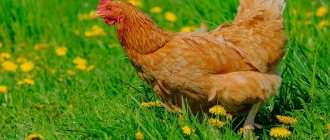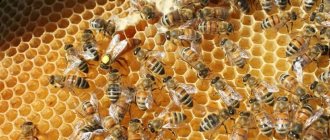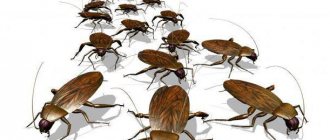Chicken eggs are good for the body. But buying them in stores is becoming more and more expensive every year. And it’s not clear what quality they are. In markets, on the market, this product may not be the freshest. In addition, it is also unknown what the laying hens were fed at the poultry farm, and what antibiotics they treated her with. Therefore, if there is an opportunity, and this is at least a small plot of land, it is better to buy replacement young stock to complete the herd. By following the recommendations for care and maintenance, you can not only provide your family with homemade eggs, but also sell the surplus. But first you need to decide on the breed and purchase young poultry from a specialized enterprise. But without knowing the characteristic exterior features of highly productive egg-laying chickens, you can simply waste money and not get what you want. We will tell you how to decide on the choice of laying hens in the article.
How to choose on the market: what parameters should you rely on when choosing?
You can buy day-old chicks and wait until they grow up to realize that there are more cockerels in the flock than hens. Or you can buy young animals, basing your selection on characteristic exterior features.
Signs of good egg production can be:
- Comb and its color;
- The volume of the abdominal cavity and its softness;
- The distance between the pubic bones (at least 3 fingers of an adult’s hand);
- If the bird is closer to the egg type, then the brow cranial arches are poorly developed and the front part of the head is characterized by weak hair.
When purchasing egg-bred chickens on the market, you should take a close look at the pigmentation of the beak. The more productive the laying hen, the faster it disappears.
Breeding chickens for eggs: incubator or pullets?
To start raising laying hens, you first need to buy them. There are two options: breeding chickens using an incubator and purchasing pullets.
The main advantage of the first method is its low cost. But there are many more shortcomings. First of all, there is gender ambiguity. That is, a large percentage of males can hatch from one clutch, although we need laying hens.
Another negative point is that not all chickens will survive during incubation hatching. In a good situation, only 80-85% of chicks usually survive up to 20 days.
A more reliable way to have laying hens is to buy pullets. Usually, chickens are taken for eggs at the age of 5-6 months to be sure that the flock will survive and begin laying eggs in the near future.
Many owners of summer cottages purchase laying hens for seasonal use. Closer to winter, during the first cold weather, poultry is sold for meat.
Advice! It is better to buy pullets from industrial enterprises. When purchasing from private owners, there is a high probability of buying a sick bird.
Many owners of summer cottages purchase laying hens for seasonal use. Closer to winter, during the first cold weather, poultry is sold for meat.
Best breeds
Chickens adapt very well to different living conditions and types of feeding. That's why they are bred in all climate zones. However, when choosing an egg breeding breed for breeding, it is advisable to take into account not only productivity, but also local conditions. Average productivity indicators of egg breeds of chickens:
- Live weight from 1.7 to 2 kilograms;
- Egg production from 200 to 340 eggs per year;
- The hatchability of young animals is about 80%.
Thanks to folk selection, such well-known chicken breeds in our country as Livenskaya and Yurlovskaya were developed. The peculiarity of these breeds is not high egg production, but large eggs and excellent vitality. Most egg-laying chickens have fairly light bones, dense plumage, and also have low live weight compared to other species. Now among poultry farmers, such breeds as Loman Brown, Leghorn, Kuchinskaya Jubilee, Hisex, Russian White and others have proven themselves to be very productive.
If incubation of eggs is not expected, then a rooster is not needed in the herd. The number of eggs produced by hens does not depend on this.
Loman Brown
This breed of chicken was bred in Germany. Now its distribution area has captured Central and Eastern Europe. Main productive characteristics of the breed:
- The weight of an adult is about 2 kilograms;
- Productivity on average up to 300 eggs;
- The egg shell color is light brown. Product weight – about 65 grams;
- High vitality of chickens. From 97 to 99%.
Loman Brown chickens are phlegmatic and calm in nature. They don’t try to break free and fly into the garden. Sexual maturity occurs at the age of four and a half to five months. Intensive egg laying lasts about two years, then the number of eggs laid gradually decreases, and keeping such chickens becomes unprofitable. They are sent to slaughter.
Leghorn
It was imported from the port of Livorno (Italy). The breed has different colors: white, black and others. But more often, white Leghorn is found in farmsteads. Main characteristics of chickens of this breed:
- Very high egg production. A record was recorded - 365 eggs. During the period of intensive egg laying, productivity ranges from 220 to 300 eggs;
- They have good early maturity. They begin laying at the age of 4, 5 – 5 months;
- The shells of eggs are white, and the product itself weighs on average up to 60 grams;
- After a year of intensive egg laying, the productivity of the breed decreases;
- Chick hatchability is up to 92%.
Leghorn
Chickens are shy and love freedom. And, having flown over the fence, they quickly find food by rummaging in the ground. Therefore, it is worth trimming one wing and the tip of the tail so that young plant shoots do not fly into the garden and shovel with the soil. Or prevent overflight by increasing the height of the fencing of the area for keeping chickens.
Leghorns are hardy and can tolerate minor temperature changes.
The egg production record of this breed is 371 eggs per year.
Kuchin anniversary
So far not as popular as Highsex or Leghorn. Probably because the productivity of these chickens is somewhat lower than that of other egg-laying breeds.
Main characteristics of laying hens:
- Live weight up to 2 kilograms;
- Sexual maturity occurs at the age of five months or six months;
- From one hen you can get from 180 to 250 eggs per year;
- The eggshell is light brown. Product weight ranges from 58 to 61 grams;
- Chick hatchability is about 90%.
Kuchin anniversary
Chickens can easily tolerate small atmospheric temperature fluctuations. They respond well to increased productivity on a balanced diet. You can use both cage and floor housing for growing. But the Kuchinskaya White still loves freedom and large enclosures.
Hisex
Over the past forty years, Leghorn crosses have been brought to our country. Among them is Hisex. This is an improved hybrid of a domestic line based on Leghorn and New Hampshire.
There are Highsex white and brown.
In general, the cross is characterized by the following indicators:
- Productivity from 280 to 350 eggs per year;
- Maintain such productivity for 2–3 years of life;
- Oviposition begins at 4, 5 – 5 months;
- The eggs are large. Mostly weighing from 63 to 70 grams;
- The body weight of a laying hen is about 2 kilograms;
- Chick hatchability is about 95%.
Chickens of this cross are resilient and calm. They get along well with other breeds in the same coop. They tolerate cold well and get used to changing food quite easily.
Highsex Whites have a slightly lower live weight, as well as lower egg production rates than Highsex Browns.
Russian white
The Russian White breed was officially recognized and registered in 1953. In appearance they resemble Leghorns, but their heads are slightly larger. Main characteristics of the breed:
- The body weight of a laying hen is about 2 kilograms. The rooster is slightly larger (2.5 – 3 kg);
- Egg production is lower than that of Leghorns and is about 260 eggs per year;
- The color of the eggshell is white;
- The beginning of egg laying in laying hens of this breed is from 5 to 5.5 months;
- Chicken survival rate is about 95%.
Russian white
Russian White chickens are very prone to brooding. Therefore, there is no need to buy an incubator. They are very unpretentious. They calmly tolerate temperature changes, as well as changes in diet.
When and where to buy laying hens
The optimal time to buy a 4.5-5 month old chicken is spring. The peak egg production of chickens occurs in the summer, since this time has the longest daylight hours, and there is also more pasture.
The optimal time to buy a 4.5-5 month old chicken is spring.
In the fall, it is necessary to cull: leave the hens with the best egg production for the winter and add a few new ones to them. In this case, after winter you can count on good egg laying. The question remains: where to buy laying hens.
There are 2 purchasing options:
- Market.
- Poultry farm.
The price difference between one and the other option is small. The main thing is the quality of the product. At markets, poultry farmers offer chickens of different breeds. It is important for the buyer to carefully examine the birds to see if they are sick. If you come across a conscientious seller, he will give comprehensive answers to your questions, regardless of whether you are a beginner or an experienced poultry farmer.
[adsp-pro-4]
The positive thing is that most often farmers keep poultry in spacious premises, often with the possibility of walking. Compared to chickens raised in a poultry farm, such laying hens have better immunity. But there is also a minus: there is no guarantee that the bird is vaccinated. In addition, you may be unlucky with a seller who sells a bird that is sick or unsuitable as a laying hen to an inexperienced buyer.
Laying hens can be purchased from farmers or poultry farms.
As a rule, chickens are not kept in poultry farms for more than 1 year, since it is advantageous to renew the hybrid stock with young animals. The poultry is kept in cages and the feed contains artificial additives. Compared to domestic chickens, they have relatively low immunity and are poorly adapted to free range. Their egg production drops quickly. The positive side of shopping at a poultry farm is that all vaccinations are available.
When is the best time to buy
Chickens can be purchased as early as April, if a room with heating and bedding is prepared for this. But the fact is that it is very difficult to determine from day-old young animals whether in the future they will turn out to be laying hens with high egg production. In addition, it is no secret that when buying chickens on the market, you can get not future laying hens, but roosters. True, knowing some subtleties, you can figure it out using good lighting, and this can be a powerful (100-150 W) lamp with a reflector. The chicken's cloaca is examined and the genital tubercle is identified. This can be done as early as 15 hours after hatching. Males have a tubercle at the bottom of the cloaca, but females do not. But even having determined that this is a future chicken, no one can guarantee its performance in advance. Therefore, it is necessary to purchase grown-up livestock. It is better to do this in early autumn, since the main features of a good layer will already be visible. When selecting birds to replace old ones, preference is given to young birds bred in early spring. For egg-type chickens, future laying hens should be about 5 months old.
Whether laying hens need a rooster can be found in this article.
Beginning of the laying hen breeding season
To quickly obtain eggs, chickens should be started at the age of 3.5 to 5 months. It is most convenient to do this in early spring until the end of May. In this case, the peak of chicken productivity will occur in the warm season. This will eliminate the need for additional lighting and heating, reducing the cost of the resulting products.
Farmers and households rarely start raising young animals in winter. Therefore, they do not have stock that will reach maturity in the spring. Small chickens are very sensitive to temperature, and providing conditions is the main criterion when growing. On a small farm, it is unprofitable to heat premises for a small number of chickens, and their mass breeding begins only in the spring.
Poultry farmers who do not want to buy rather expensive grown-up livestock can purchase day-old chicks. In order for them to reach maturity in time for spring, they need to be purchased well in advance in early or mid-winter. In this case, poultry farms come to the rescue, selling chickens constantly, regardless of the season.
- In the Voronezh region, the Aleynikovsky Rossosh hatchery operates, which sells many types of poultry, including laying hens and chicks. The address of the enterprise is Voronezh region, Rossosh, Ukrainsky village, st. Kolkhoznaya, 21 a. Sales department phone number +7 (47396) 79 2 98. Aleynikovsky incubator Rossosh has its own website https://alenikovskij.ru.
- In the Krasnodar region, laying hens from a poultry farm and day-old chicks are sold by the Bryukhovetsky incubator. Production address - Krasnodar region, Bryukhovetsky district, Bryukhovetskaya station, st. Proletarskaya, 312. Bryukhovetsky incubator has its own website https://bruptica.ru, where you can see the schedule according to which sales are made. Company phone number +7 (86156) 33481, 3-16-16.
- In the Republic of Bashkortostan, these products are sold by the Ashkadar poultry farm, which is also known as Sterlitamak. Production address - Sterlitamak district, Sterlitamak, Raevsky tract 18. Telephone.
An example of a good layer: how to choose for beginners
When choosing replacement young animals, you should immediately cull birds with physical defects. For example, deformity of the beak, crooked fingers and keel.
You can read about meat and egg breeds of chickens in this material.
A good productive chicken can be distinguished by a number of characteristics:
- Mobility;
- Eats the food offered well;
- The body is long and wide;
- The chest is well developed, wide;
- The legs are quite strong and widely spaced.
You can read about keeping laying hens at home here.
Too much or too little protein in your chicks' feed may cause them to fall off their feet for a while. This may lead to a decrease in egg production in the future.
Plumage
To determine the productivity of a laying hen, you can simply look at its plumage. In a healthy chicken it is shiny and dense. The low-productive type has dull and loose feathers. The egg production of a bird is also determined by molting. Highly productive hens lay eggs longer and begin shedding their feathers in October or November.
At this point, they acquire an unpresentable appearance, and an inexperienced poultry farmer may decide to cull such individuals.
Molting in poor laying hens begins in mid-July-August. And this process stretches for almost 4 months. But by the time the poultry population begins to be stocked, they look more elegant and may be mistakenly given preference. It should be remembered that with changes in diet or various diseases, premature molting may begin. Therefore, when assessing a bird based on the condition of its feather cover, this feature should be kept in mind.
You can read about high-quality feed for laying hens at this link.
You should also pay attention to the number of wing feathers. A good hen has more of them than a bad one.
Beak and legs
The color of the beak, iris and legs can also tell about the egg production of chickens.
If you buy replacement young animals, you should pay attention to the yellow pigmentation of the legs, beak and iris of the eyes. As egg production increases, the pigmentation gradually disappears. And the more productive the laying hens, the faster this process goes. Loss of color occurs in the following sequence:
- Iris;
- Beak;
- Legs.
This is why birds with good egg production in the fall do not have as bright a pigmentation as poor laying hens who retain it.
Young animals with crooked legs are not kept for breeding, because this trait is inherited and reduces the productivity of the bird.
Comb and earrings of a hen and chick
Not only such indicators as plumage, pigmentation of the legs, irises, but also the distance between the pubic bones and the condition of the abdomen can tell about the productivity of the bird. You can tell about egg production by the color, shape of the comb and earrings.
To form a livestock, chickens with either a pale or overdeveloped comb should not be left. Pale, wrinkled earrings and comb are a sign that the chicken’s egg production is low. In highly productive plants they are bright scarlet or reddish-pink in color, warm and elastic.
Egg production cannot be determined by the shape of the comb. This is an exterior indicator of a particular breed. Only color and density can indicate the productivity of a laying hen.
Market or poultry farm?
When chickens are bought at one day old, there is not much difference whether it is a domestic bird or a factory one. Since the chicks have just emerged from the egg, they have not yet been exposed to the conditions provided by a poultry farm or backyard farm.
An adult laying hen 3-4 months old, which can be purchased from a private farmer or a large poultry farm, is different. In factory conditions, chickens are guaranteed to receive vaccinations and are accustomed to cage keeping. Such a bird can easily tolerate cramped quarters, but it is accustomed to eating only feed with synthetic additives and stimulants. This has accelerated her development; she will begin to lay eggs faster, but will also lose her productivity earlier.
In farms and households, laying hens usually move freely. They eat live and green food. Therefore, when buying such a bird on the market for your household, you can be more confident that it will most likely adapt to your conditions and feeding regime.
If we take laying quail as an example, then factory-made ones will be preferable. This is due to the fact that such a quail has definitely received vaccinations and is protected against many diseases. Living conditions in the home and in the factory are practically no different, because laying quails are always kept in standard cages.
Feeding quails at the factory and at a private farmer is the same. It is typical for quails that they will lay eggs only when they consume balanced feed.
Of course, many people make it themselves at home, but it is not much different from the factory one, because in addition to crushed grain from various crops, it also contains calcium and protein supplements with premixes.
conclusions
In homestead livestock farming, chickens of egg breeds are often raised. Among the most productive are Leghorn, Russian White, Highsex, Loman Brown, Kuchinskaya Jubilee. Every 2-3 years, due to a decrease in productivity, chickens are culled, and the poultry farmer buys replacement young stock. To select egg-laying chickens for further use, you need to pay attention (especially to beginners) to the following exterior signs of high productivity:
- The correct distance between the pubic bones should be at least 3 fingers of an adult’s hand.
- Volumetric and soft belly.
- Brightly colored and elastic comb and earrings.
- Yellow pigmentation of legs, iris, beak. In the fall, it is paler in highly productive chickens.
- Shedding. Good layers molt in mid-autumn.
- Plumage. In a healthy and highly productive bird, it is shiny and tightly adjacent to each other.
You can read about why chickens go bald here.
Features of laying hens
The key feature of laying hens is the ability to lay large eggs. They are edible and of high quality. This product is produced by purebred laying hens. They are characterized by common features:
- chicken body weight – no more than 2.5 kilograms;
- graceful physique;
- rapid physical growth;
- thick feathers;
- large wings;
- a long tail;
- The comb is straight and hard – it has 7 teeth.
The first clutch occurs 125 days after the chicken is born. At day 140, the hen reaches full physical development.
Distinctive features of laying hens
There are a lot of best breeds of laying hens; there are also crosses of these breeds, the females of which are also distinguished by high egg production. But they all have common features that are characteristic specifically for representatives of egg breeds.
Laying hens do not gain too much body weight; they have a special body shape and a special psyche:
- The main advantage of laying hens is the number of eggs laid per year. For representatives of the best breeds, this figure is above the 300 mark;
- early maturity of young animals - already 120 days after birth, representatives of many breeds already begin to lay eggs. By this age, chickens are fully feathered, become independent and do not need the troubles of the mother hen;
- The maximum weight of male egg breeds does not exceed 3 kg. And laying hens usually weigh even less - about 2.3 kg. Such breeds have the ability to fly, and the plumage of the wings and the entire body is better developed than that of other breeds of chickens. The wingspan is large, and the tail feathers are elongated;
- chickens perfectly absorb and process all types of feed, the metabolism in their body is accelerated. Feed should be enriched with minerals as much as possible. During the period of active egg production, laying hens especially need calcium so that the egg shells are strong enough;
- breeders note the following traits in these breeds of chickens - fussiness, high activity. Therefore, laying hens should be provided with free range at any time of the year;
- During the selection process, the mothering gene was lost in the best breeds of laying hens, so such individuals do not become hens. In order to breed these breeds on the farm, you have to lay eggs in an incubator, or lay eggs with hens of other breeds.
This is interesting: Maran chicken breed description care feeding breeding - break it down point by point
